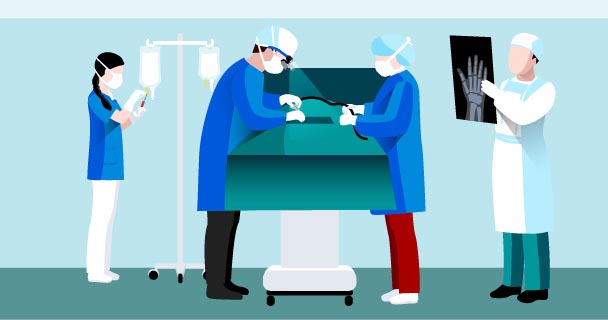blog


While fairly uncommon until the relatively recent past (they first made their appearance in the 1970s), Ambulatory Surgery Centers (ASCs) now routinely provide same-day surgical care as well as diagnostic and preventive procedures. The Ambulatory Surgery Center Association estimates that there are roughly 5,700 ASCs in the U.S. As the convenient, lower-cost alternative to inpatient care, it would seem that the future is bright for ASCs, but there will still be some challenges. So what are the challenges that ASC leaders should be prepared to face?
ASC Challenges: Physician Recruitment – ASCs will be trying to recruit independent physicians from the same pool as their regular acute-care hospital counterparts. While this has always been the case, the labor market has been heating up with hospitals and ASCs both using aggressive recruiting tactics including significant signing bonuses while the labor market continues to make a slow and extremely uneven recovery. With unprecedented numbers of workers in all industries contributing to “The Great Resignation”, this issue will likely keep ASC leaders’ attention for the foreseeable future. In addition, recruiting messages that may have worked well 20 years ago will be less effective with younger surgeons. Messages about work-life balance, diversity, mission, vision and values are important to millennials which may mean an adjustment to recruiting messages.
ASC Challenges: Staffing – Work schedules that are a bit more stable in comparison to those of staff in inpatient facilities have typically been an incentive for employees to choose an ASC over other healthcare settings. The flexibility and stability of those schedules are a bit more at risk as persistent staffing challenges have made flexibility a bit more elusive in the ASC environment.
ASC Challenges: Referral Relationships – Building strong relationships with referring physicians is key to creating sustainable patient volumes. Market intelligence along with intelligence from personal relationships with referring physicians should be able to answer questions about where patients are currently being referred for services, the reputation of the ASC, barriers to referrals, perceptions about quality, the referral process and the processes for communicating with referring physicians. This data can then inform bigger decisions on strategies to build more robust referral relationships.
ASC Challenges: Insurance – While not necessarily of unique concern to ASCs, insurance will remain a business challenge for leaders. Confusing insurance mandates for consumers, high-deductible plans and a significant number of consumers without insurance can create collection and revenue cycle issues for ASCs. As more financial responsibility for healthcare costs shifts to consumers, payment plans will become more common in this setting and others. In addition, insurers need clinical data to reinforce payment policies. ASCs that have data collection and analysis capabilities will be able to respond more effectively to requests for this kind of data to help insure maximum reimbursement.
ASC Challenges: Investments in Emerging Technologies – As more surgeons train using robotics, ASCs will need to begin to evaluate the appropriateness of an investment in this kind of technology. The technology remains costly, but may soon be an expectation among younger surgeons.
ASC Challenges: Managing Coding Changes – CPT and ICD-10 codes change on a fairly regular basis. Some codes are added, some are rewritten and some have been deleted altogether. Software changes that insure that the new and correct codes are being used are essential to maximum reimbursement.
ASC Challenges: More Procedures – As the shift to offer more procedures in outpatient settings continues and is more accepted by payors, consumers and physicians, the breadth of services offered in this setting grows as well with total joint replacements, bariatric surgeries and spine surgeries increasingly being performed in ASCs.
While growth remains extremely likely in the ASC sector, in order to remain competitive, ASCs will need to develop successful strategies to address current and emerging challenges.
HealthStream’s learning management system and healthcare training solutions support medical training initiatives and allow for the best patient care.
View All Learning & PerformanceExpand the decision-making skills and effectiveness of your healthcare workforce with HealthStream's workforce development programs and services.
View All Clinical DevelopmentHealthStream credentialing solutions bring automation, consistency, and insight to every step of the provider lifecycle—supporting clinical excellence and operational efficiency.
View All CredentialingHealthStream’s scheduling solutions help organizations—from acute to non-acute systems, large and small—optimize staffing, reduce burnout, and support staff with scheduling tools that adapt to their needs.
View All SchedulingWhen you enact HealthStream's quality compliance solutions, you can do so with the confidence your healthcare organization will meet all standards of care.
View All Quality & ComplianceTransform end-to-end revenue cycle management with comprehensive education
View All Revenue Cycle EducationLearn about our advanced resuscitation training solutions. Our solutions are designed to help improve patient outcomes.
View All Resuscitation